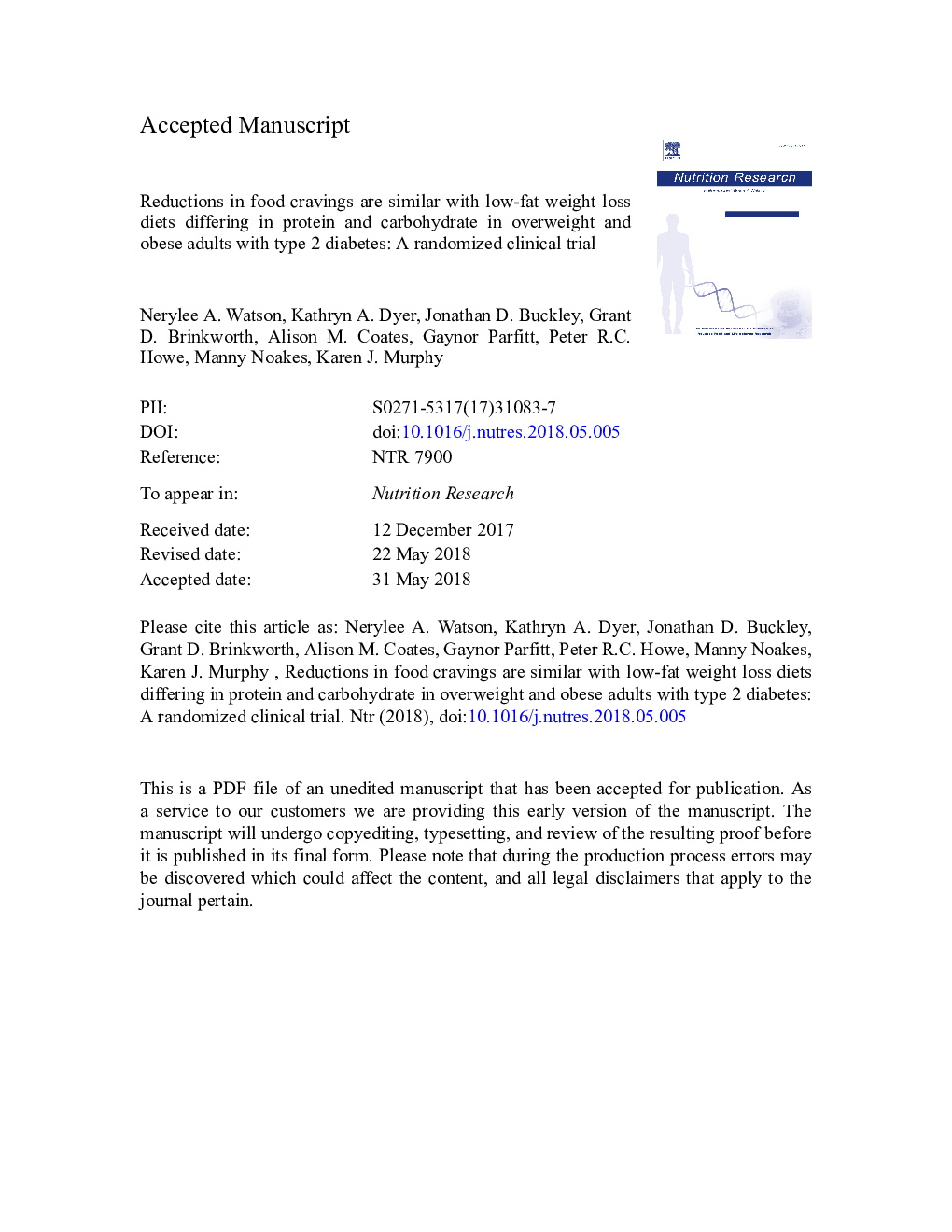| Article ID | Journal | Published Year | Pages | File Type |
|---|---|---|---|---|
| 8633966 | Nutrition Research | 2018 | 39 Pages |
Abstract
Food cravings are common in type 2 diabetes (T2D). Higher-protein diets are effective in improving satiety but their effect on cravings is unclear. It was hypothesized that a high protein (HP) diet would provide greater reductions in cravings than an isocaloric higher-carbohydrate diet (HC). In a randomized controlled trial, 61 adults (54% males) with T2D (means ± SD: BMI 34.3 ± 5.1 kg/m2; aged 55 ± 8 years) consumed either a HP diet (mean across study: 29% protein, 34% carbohydrate, 31% fat) or an isocaloric HC diet (21%:48%:24%) for 12-weeks each of weight loss (WL) and weight maintenance (WM). The Food Craving Inventory (FCI), measuring types of foods craved and the General Food Craving Questionnaires measuring traits (G-FCQ-T) and states (G-FCQ-S) were assessed at Weeks 0, 12 and 24. Weight changes were similar between groups (means ± SEM: WL: -7.8 ± 0.6 kg, WM: â0.6 ± 0.4 kg). No group effects or group x time interactions were found for any outcome (P ⥠.07). Independent of group, all food cravings (except carbohydrates) and G-FCQ-T subscales decreased over the 24-week study (P ⤠.04) with sweets and fast food cravings, loss of control and emotional cravings reducing following WL (P ⤠.03). Obsessive preoccupation with food decreased following both phases (WL: P = .03; WM: P = .001). Weight was associated with several FCI subscales (r ⥠0.24, P ⤠.04). In conclusion, both the HP and HC diets provided significant reductions in food cravings after similar weight losses which were maintained when weight was stabilized.
Keywords
Related Topics
Life Sciences
Biochemistry, Genetics and Molecular Biology
Endocrinology
Authors
Nerylee A. Watson, Kathryn A. Dyer, Jonathan D. Buckley, Grant D. Brinkworth, Alison M. Coates, Gaynor Parfitt, Peter R.C. Howe, Manny Noakes, Karen J. Murphy,
